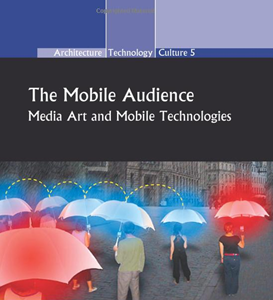
Jaakko Nousiainen, director of Omnivore the Opera
More and more art forms are discovering the mobile phone as a platform for creating, distributing and marketing art. Looks like perhaps one of the final art frontiers will soon be broken: the art form that has always been about big stages and huge visual and audio extravaganza will be coming to the mobile phone. Which one is that? Well, opera of course. Yes, you read that right. Be prepared for a mobile phone opera!
The driver behind the effort is the Finnish multitalent Jaakko Nousiainen. Jaakko, thanks for taking time for a short interview with the 3 Inch Canvas!
The 3 Inch Canvas (3IC): Welcome to the 3 Inch Canvas Jaakko. Tell us a little about yourself.
Jaakko Nousiainen (JN): I am a freelance writer, director and researcher. In recent years I have mainly worked on music theatre and contemporary opera projects. In the past I’ve been a restless soul, I’ve been active in many fields ranging from sound design and performance art to new media design.
3IC: Where on earth did you get the idea to make a mobile opera?
JN: Some five years ago I attended a massive mobile expo in Barcelona, and in the middle of all the tech hype I felt a bit desperate because there was an obvious lack of interesting, creative content. I began to think what kind of content would excite me most as a mobile user, and as an opera fan the answer soon became evident.
3IC: The name of the opera is Omnivore. Seeing that many think of opera as a rather specialized musical diet, can you tell us a bit about the opera itself?
JN: Basically, Omnivore consists of short opera music videos. The name refers to the subject matter, food and eating habits. Omnivore is a monologue opera where users – or rather participators – meet a character, played by mezzo-soprano Essi Luttinen, who has a very passionate relationship with the food she eats. The participators will get to see a sequence of videos according to a set of rules programmed in the underlying database. There are different variations to the content. Depending on the time of day and time between consecutive visits, the resulting experience can be different from someone else’s who checks in at different times.
3IC: Did you have a special audience in mind when you started out?
JN: Yes, I believe there are opera fans and those interested in contemporary music among smart phone users. Perhaps the work will also attract people who normally would not come to an opera house or a contemporary music concert. Bringing this art form into an everyday device will hopefully lower the threshold of becoming acquainted with it.
3IC: Could you tell us a little about the production process? Schedules, team, how you have been working..
JN: Omnivore has been conceived and produced within an independent group of artists. The opera is composed by Miika Hyytiäinen, who is currently based in Berlin. I am the opera’s director and I’ve also written the libretto. Other musicians in addition to Essi Luttinen are Eva Alkula (kantele, koto) and Lauri Sallinen (clarinet). The music has been recorded in collaboration with the Sibelius Academy’s Centre for Music and Technology, and the video shoot in turn was done in collaboration with the Finnish National Opera. Other key persons include producer Hansku Kurkela, music recordist and mixing guru Mikko H. Haapoja and Eetu Lipponen, who is responsible for camera, editing and visual post-production.
We’ve been working on this for quite a while already but taking long breaks in between project phases. We’ve mainly been funded by grants, and creating this kind of experimental work has had many stages: We’re not only recording an opera and filming it, but also creating a user interface in a new medium for opera. For that reason, we’ve made two user interface demos along the way to validate the concept and to gain understanding on the user experience. In practice, the production compares to creating an hour-long opera movie (as all the material variations add up to approximately 60 minutes) plus a mobile content service.
3IC: Opera is often synonymous with “big”. What special challenges did you have when you tried to fit the opera format into a mobile device?
JN: Yes, I can see the paradox here, and that was what interested me in the first place. When we started working on the project one of the starting points for Miika and me was that we needed to disassemble opera into elementary pieces and put them back together again to fit the requirements of the mobile medium. We needed to think about technical limitations too, and find out what kind of instrumentation would work in the range of mobile phones’ audio quality, how long videos people might want to see, what kind of visual elements would work on a small screen and so on and so on. But it was also fun, the limitations didn’t seem confining, but rather as possibilities to create something new and medium specific.
3IC: The Omnivore is now on the editing table. When and where can we expect the release?
JN: Soon, we all hope. I won’t give out a date yet. We want to make sure the technical implementation goes smoothly first. But the release shouldn’t be in too distant future now.
3IC: If all your dreams would come true, what would happen after the release?
JN: I would stop seeing dreams where I hear this music on repeat, haha 😀 Seriously though, I hope the opera finds an audience and generates a good response. We’ll see what people will make of it, it is exciting of course. I already have some ideas for a new mobile opera where I’d like to experiment with location awareness and other fun features we left out of scope this time. Mobile technology is developing so fast and all these emerging possibilities make me itchy to start the next project as soon as possible.
3IC: That sounds great. Thanks Jaakko for lending us a few minutes of your very busy schedule and the best of luck with the final stretch towards the release of Omnivore.
JN: Thank you having me, it’s been a pleasure.
You can follow the progress of Omnivore towards release on the Omnivore blog at omnivoretheopera.posterous.com.





 I had the good fortune to spend a highly interesting week in Tokyo, touring a number of high-tech companies together with a group of PhD students from the Aalto University.
I had the good fortune to spend a highly interesting week in Tokyo, touring a number of high-tech companies together with a group of PhD students from the Aalto University.

